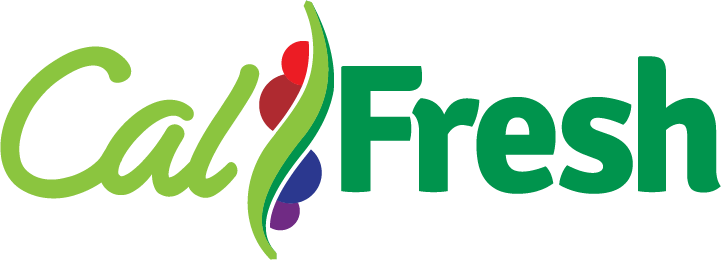Our Story
Empowering People, Changing Lives since 1980
RCAA was incorporated in February 1980 and is one of the 1100 community action agencies throughout the United States. One of the first RCAA programs was the Energy Demonstration Project. It quickly grew to provide weatherization, home energy assistance, and lead-based paint abatement. The Youth Service Bureau began as a resource for runaway youth in the early 1980's and has grown into a major street outreach project for runaway and homeless youth, an emergency shelter, and two long-term transitional shelters. The Housing Rehabilitation Division began in 1984 as a program to help low-income homeowners afford to maintain their homes and has rehabilitated over 500 homes in Humboldt County. Unfortunately funding for this project ended in 2010.
The Property Management Division began in the early 1990s to provide U.S. Department of Housing and Urban Development (HUD)-subsidized affordable housing. As RCAA acquired apartment buildings, it grew as more apartments were purchased with long-term HOME loans. It now owns 70 units of affordable housing and about 10 other RCAA-owned buildings for the various RCAA programs to operate from. The Family Services division began in the early 1990s when RCAA operated the County's winter homeless shelter. It now manages the largest homeless shelter in the County with 81 beds, two transitional living facilities for homeless families and women escaping domestic violence.
History of Community Action
Community Action originated with the passage of the Economic Opportunities Act (EOA) of 1964 as a part of President Lyndon B. Johnson’s “War on Poverty.” The purpose of this statute was to mobilize the human and financial resources of the nation to combat poverty in the United States. The act established a federal Office of Economic Opportunity headed by the late Sargent Shriver, and created organizations called Community Action Agencies (CAAs) that would develop strategies to solve local issues of poverty.
Thus, the Community Action movement became a part of the national policy “to eliminate the paradox of poverty in the midst of plenty.” CAAs serve as an administrative umbrella for several programs that would be unable to stand individually. The system has proven to be a very cost-effective method of delivering services at the local level. Flexibility in programs, responsiveness to community needs, and local control make CAAs increasingly attractive to address communities’ social needs.
This national network of approximately 1,100 agencies covers 96 percent of our nation’s counties (including 58 in California). CAAs have been a lifeline for America’s low to moderate income population by delivering program services through the federally funded Community Services Block Grant (CSBG).
Why Community Action
Community Action equips low-income citizens with the tools and potential for becoming self-sufficient. The structure of our program is unique – federal dollars are used locally to offer specialized programming in communities. It is a coordinated effort to address the root effects of poverty and to, ultimately, move families and individuals to self-sufficiency.
This work is not easy and demand is always shifting and changing. Over the years, the federal government has changed as well. The funding is now part of the Block Grant System, which allows for the flexibility and specialization of unique programs. Poverty is viewed as a systemic problem and Community Action is a systems approach to resolving those issues. There are now over 1,100 Community Action Agencies throughout the United States and Puerto Rico.
Community Action Agencies (CAAs) promote self-sufficiency, not dependency. Among their three key assets are:
Flexibility
Immediacy
Stability
The Community Action Method
- COORDINATION - A bedrock principle of Community Action is that resources of all kinds need to be integrated so they can be used in combination to solve community and individual problems. CAAs manage more than $5.6 billion in public and private resources annually, serving more than 9.3 million low-income persons; the CSBG-funded staff goes into the community and to other government sources to bring in not only leveraged funds but also hundreds of thousands of local volunteers.
- PRIORITIZE PREVENTION
- ADDRESS THE CAUSES OF POVERTY
- IMPROVE THE COMMUNITY
- CREATE OPPORTUNITY
- FLEXIBILITY
- DIRECTED TO LONG TERM CLIENT DEVELOPMENT
Programs and Services
Encourage Children and Youth
- Head Start
- Literacy Programs
- Dropout Prevention
- After School Enrichment and Tutoring
- Teen Centers
- Recreation and Sports Programs
- Special Supplemental Nutrition Program for Women
- Infants & Children (WIC)
- Well-Baby Clinics
- Summer Enrichment Programs
- Summer Food Programs
- Child Care Food Programs
- Pregnancy Prevention
- Character Education
- Substance Abuse Education
- Prevention & Counseling
- Summer Youth Employment Programs
- College Counseling and Placement
Support the Working Poor
- Child Care,
- Adult Education,
- GED Preparation,
- Job Training and On-The-Job Support
- Job Search Assistance
- Job Placement
- Job Creation
- Small Business Development
- Loan Funds
- Senior Community Service Employment
- Displaced Homemaker Programs
- Budget Counseling
- Interning, and Training Access
Support the Poor Facing Crisis
- Homeless Shelters & Drop-In Centers
- Utility Deposits
- Eviction Prevention
- Domestic Violence Programs & Shelters
- Transitional Housing
- Food Pantries Energy Crisis Assistance & Shelter
- Emergency Food Baskets
- Emergency Clothing, Supplies, and Services - including Medical & Legal Volunteer Help
Sustain and Honor the Elderly
- Meals on Wheels
- In-Home Care Programs
- Senior Centers
- Senior Day Care
- Foster Grandparents
- Congregate Meals
- Medical Transportation
- Volunteer Chore Services.
Strengthen the Whole Family
- Comprehensive Family Development Support
- Nutrition Education
- Parenting Education
- Community Gardens and Canneries
- Food Stamps
- Health Clinics
- Weatherization Assistance
- Energy Assistance
- Rental Assistance
- Home Ownership Programs
- Community Centers
- Individual Development Accounts.
Strengthen the Community
- Low-Income Housing Development
- Economic Development and Support for New Business Ventures
- Mobilization of Community-Wide Safety and Crime Prevention Initiatives
- Consumer Education and Fraud Prevention
- Community Reinvestment Act Partnerships
- Support for Groups Working on Neighborhood Improvements
- Support for Dialogue and Planning among all Sectors of the Community.
Unique Characteristics
- BOARD STRUCTURE - CAAs are required to have a tripartite board consisting of equal parts of the local private sector, public sector, and low-income community representatives. This structure brings together community leaders from each of these groups to collaborate on developing responses to local needs. This allows for Maximum Feasible Participation in both the creation and administration of Community Action programs.
- VOLUNTEER SUPPORT – The CAA network is one of the largest users of volunteer services in the country. In Fiscal Year 98, CAAs reported that volunteers contributed more than 27 million hours of service, equivalent to more than 13,000 full-time employees.
- LEVERAGE FOR OTHER RESOURCES – Every Community Service Block Grant (CSBG) dollar spent leverages nearly $4 of state, local, and private contributions combined. The CAA network administers a total of nearly $5.6 billion in federal, state, local and private resources.
- INNOVATIVE SOLUTIONS – CSBG funds give CAAs the flexibility to design programs that address needs specific to individuals and the local community and to identify specialized resources that fit these needs.
- LOW ADMINISTRATIVE COSTS – CAAs have very low administrative overhead costs (on average, between 7 and 12 percent). Resources are invested directly in the community and families, not in bureaucracy.
- COMPREHENSIVE AND RESPONSIVE – CAAs respond quickly when a family or individual is in crisis to avoid costly long-term problems. The highest priority is placed on helping people achieve permanent self-sufficiency. In addition to emergency assistance, a major portion of CSBG expenditures is for coordination among various programs. Integrated service delivery is tailored to individual circumstances.
- COMMUNITY AND FAMILY PROGRAMS – CAAs provide services that address the full range of family needs – from Head Start and other education and child development programs, to youth and adult employment and training, to services for seniors and the frail elderly. Services are generally coordinated through a case manager or family development specialist. Other CAA programs are designed to strengthen the local economy and develop the community’s infrastructure under the guidance of community leaders.
- REACHING MILLIONS OF AMERICANS – CAAs provide services to more than a quarter of all Americans living in poverty and to several million more families with incomes only slightly higher than the poverty threshold every year. 2.8 million low-income children are among those served.
The Simpson-Vance House
The Simpson-Vance house was built in 1892. It is one of the finest examples of Queen Anne architecture. The Simpson-Vance house was placed on the National Register of Historic Places in 1986. The octagonal corner tower, stacked bays and varied roof-line identify this popular Victorian style, but it is the generously applied flat and spindle work ornamentation covering the frieze, portico, bays, windows, and tower that sets this house apart and makes it notable in the City's architectural heritage. This house was built for Mr. James Simpson, who was a skilled carpenter and a contractor/builder who remodeled and erected both commercial and residential structures in Eureka. James Simpson and his wife Elizabeth and their 16 children, 12 surviving at the time of the 1900 census, were the first to live in this house. Six boys and six girls between the ages of 9 and 21 were the ready-made help needed to run a large turn-of-the-century household. The Arcata Union observed that "We know of no man that does not take boarders who have more use for a large house than Simpson."
In October of 1902, the house was sold to John M. Vance, born in 1854, also a native of New Brunswick, and heir to the large railroads and timber interests acquired by his uncle, pioneer lumber baron John Vance. After his uncle became ill in 1892, Mr. Vance was entrusted with the management of his uncle's vast railroad, timber and milling operations. After John M. Vance's death in 1907, he was recognized for his contributions throughout the County of Humboldt by Irvine's "History of Humboldt County California".
Sarah Vance, John M.'s wife, lived in the house until her death in 1933. She was survived by her daughters Etta and Carlotta, and her son, Henry. Her daughter, Etta, who never married, occupied the house until her death in 1943. The following year the property was sold to Charles Hudson, a Congregation Minister, and during his ownership, it provided a home for older women who enjoyed the fading splendor of the old house.
The Redwood Art Association purchased the house in 1967 but had to relinquish it in 1969 when it became the Humboldt Halfway House. The State of California purchased the property in late 1974 as part of the right-of-way for the Eureka Freeway. That project has not come to fruition, but, in the meantime, the property was sold to the Redwood Community Action Agency (RCAA). RCAA completed an extensive 5-year renovation of the house with funding from the Department of Parks and Recreation - Office of Historic Preservation.




